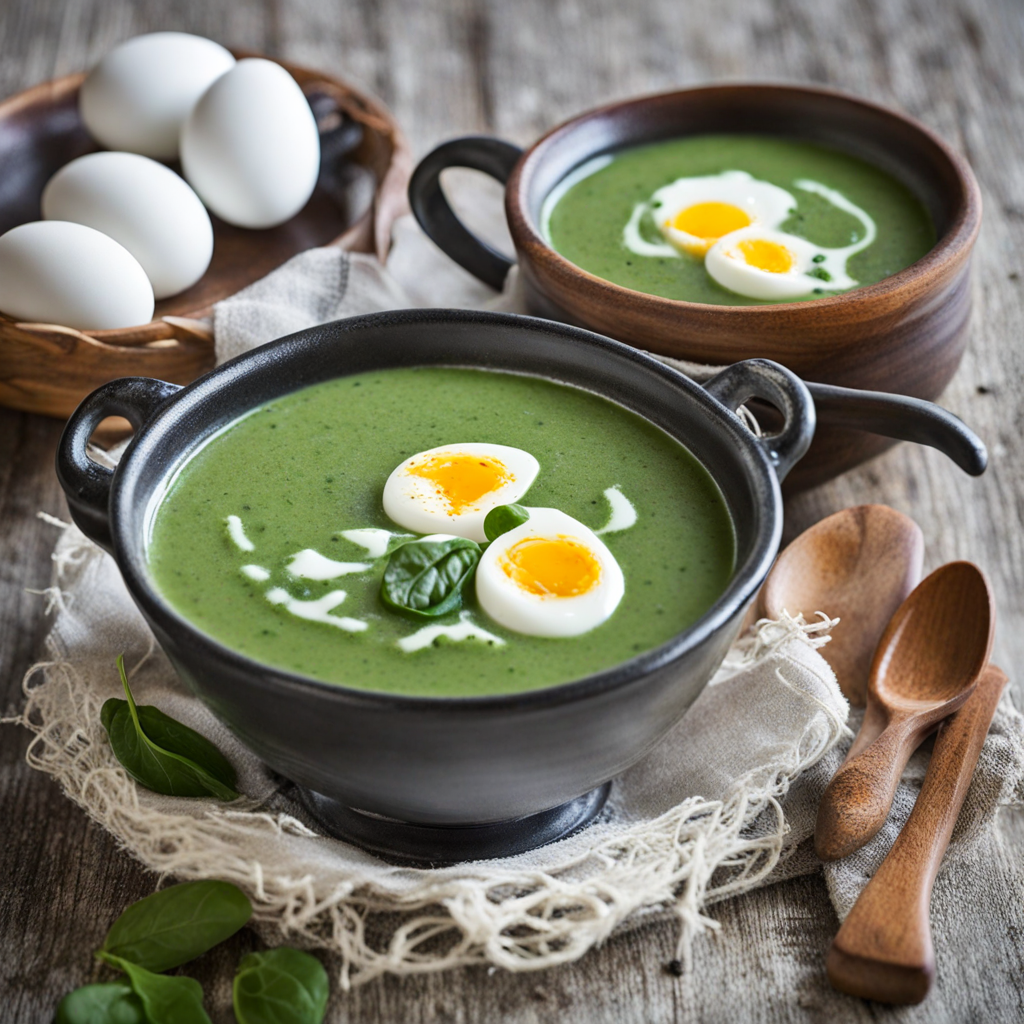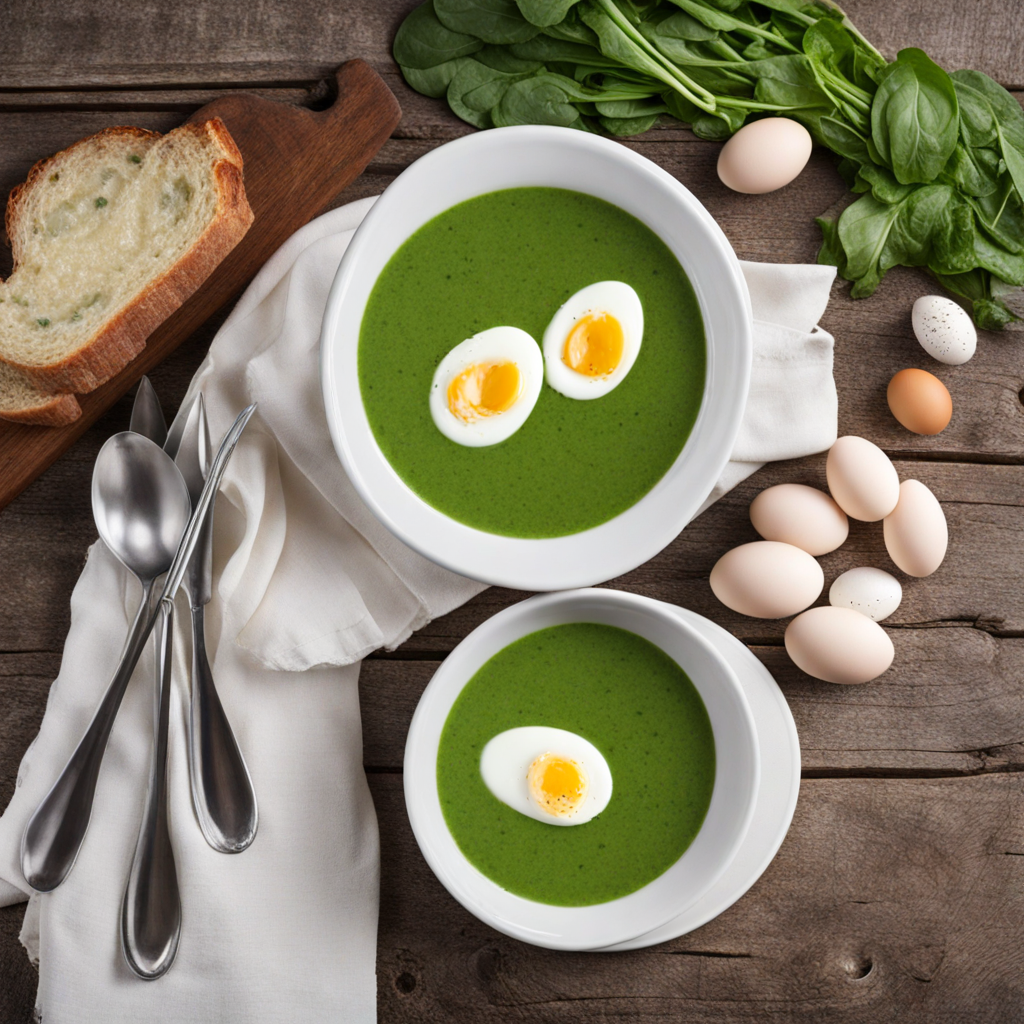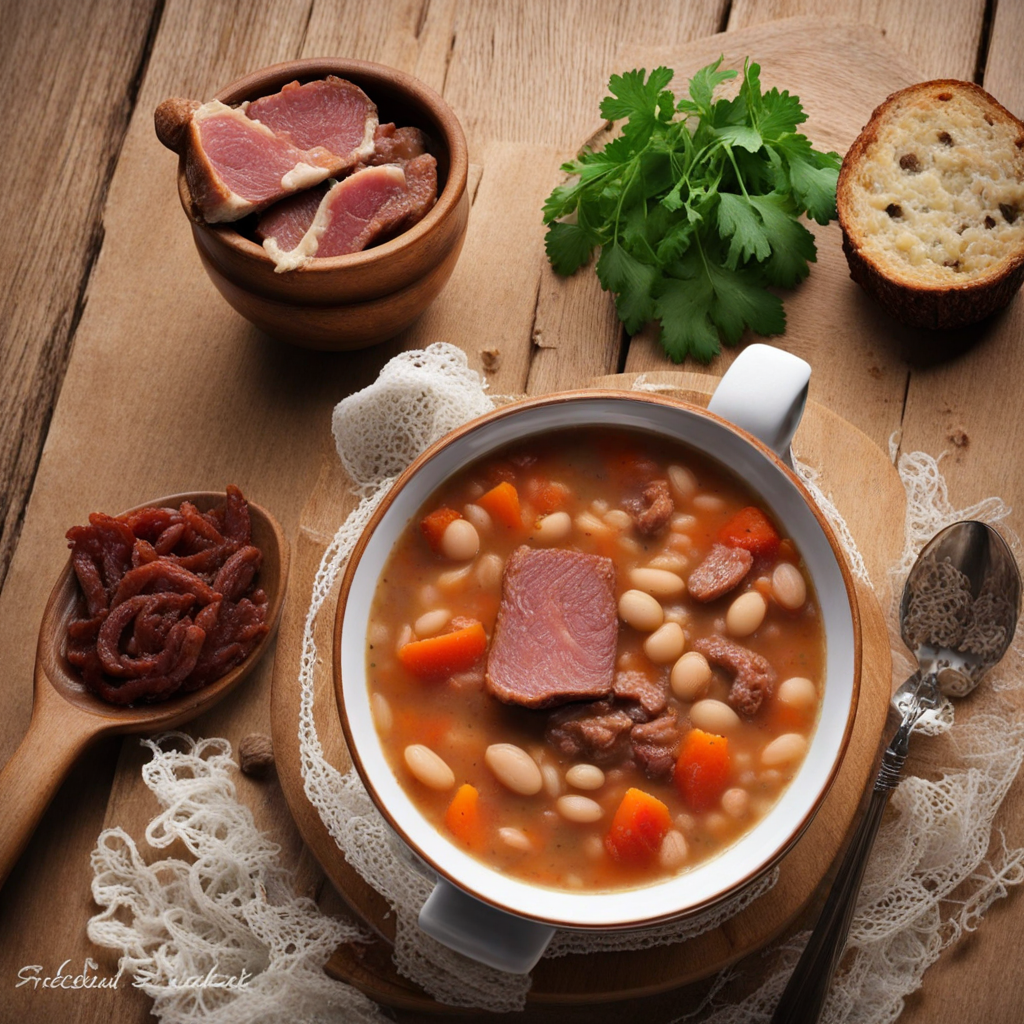Špenátová Polievka
Špenátová Polievka is a delightful Slovak spinach soup that embodies the essence of comfort food with its rich flavors and smooth texture. The soup is primarily made from fresh spinach, which gives it a vibrant green color and a distinctive earthy taste. The spinach is typically sautéed with onions and garlic to create a fragrant base that enhances the overall depth of flavor. Often, potatoes are added to the mix, providing a creamy consistency once blended, making the soup hearty and satisfying. The beauty of Špenátová Polievka lies in its simplicity, often seasoned with salt, pepper, and a hint of nutmeg to elevate the spinach's natural taste. Some variations include the addition of cream or sour cream, lending the soup a velvety richness that complements the green vegetables perfectly. Garnishing with croutons or a sprinkle of fresh herbs can add a delightful crunch and freshness, making each bowl visually appealing as well as delicious. This soup is not only comforting but also packed with nutrients, making it a healthy choice for those looking to explore new flavors. It is often enjoyed as a light meal or a starter, and its warm, inviting aroma is sure to draw anyone in. Whether enjoyed on a chilly day or as a refreshing dish in warmer months, Špenátová Polievka offers a unique taste of Slovakia that is both wholesome and satisfying.
How It Became This Dish
The History of Špenátová Polievka: A Slovak Spinach Soup Introduction Špenátová polievka, or spinach soup, is a beloved dish in Slovakia, deeply rooted in the country's culinary traditions. This simple yet nutritious soup reflects the agricultural practices, seasonal ingredients, and cultural influences that characterize Slovak cuisine. The story of Špenátová polievka is not just about the ingredients; it is a narrative woven into the fabric of Slovak history, showcasing the evolution of food practices and the cultural significance of communal meals. Origins of Špenátová Polievka The origins of Špenátová polievka can be traced back to the rural lifestyle of Slovakia, where farming was a predominant way of life. Spinach, a leafy green vegetable native to Persia, found its way to Europe through the Mediterranean, gaining popularity in various cuisines by the Middle Ages. It was introduced to Central Europe during the Renaissance and quickly adapted to local tastes and growing conditions. In Slovakia, spinach became a staple in the diet of the peasantry, appreciated for its nutritional value and versatility. The tradition of soup-making was already well-established, and with the abundance of fresh greens available in spring and early summer, spinach soup naturally emerged as a seasonal favorite. The peasant lifestyle emphasized the use of locally sourced ingredients, and spinach, often grown in home gardens, became a key component of many dishes. Cultural Significance Špenátová polievka holds a place of cultural significance in Slovakia, both as a reflection of traditional culinary practices and as a symbol of Slovak identity. In many Slovak households, especially in rural areas, soups serve as the cornerstone of daily meals. They are not only nourishing but also embody the spirit of hospitality and community. This soup is often served during family gatherings, holidays, and communal events, reinforcing bonds among family members and friends. It is common for Slovaks to gather around the table to share stories and laughter, with Špenátová polievka being a comforting presence that unites generations. The dish is also associated with the Lenten season, when many Slovaks traditionally abstain from meat. Spinach, being a nutritious green, serves as an excellent substitute, allowing for fulfilling meals that align with dietary restrictions. Development Over Time As Slovak cuisine evolved, so too did Špenátová polievka. In its simplest form, the soup consists of fresh spinach, onions, garlic, and potatoes, often thickened with flour or blended to create a creamy texture. The basic recipe has remained relatively unchanged, but regional variations and modern interpretations have emerged over the years. In the early 20th century, with the advent of industrialization and urbanization, traditional food practices began to shift. The influx of new ingredients and culinary techniques from neighboring countries, such as Hungary, Austria, and Poland, influenced Slovak cooking. While traditional recipes remained cherished, Slovaks started to experiment with flavors and cooking methods, leading to innovative takes on classic dishes like Špenátová polievka. Today, you might find the soup garnished with a drizzle of cream, a sprinkle of fresh herbs, or even croutons, elevating it to a more sophisticated dish suitable for modern palates. The introduction of health trends further popularized spinach, known for its high iron content and health benefits, making Špenátová polievka a fashionable choice for those seeking nutritious meals. Seasonality and Sustainability One of the most remarkable aspects of Špenátová polievka is its connection to the changing seasons. Traditionally, Slovak cuisine is inherently seasonal, relying on what is available in local markets and gardens. Spinach thrives in cooler weather, making it a springtime delight. As a result, Špenátová polievka is often prepared when the first tender leaves of spinach are ready for harvest, symbolizing the arrival of spring and new beginnings. In recent years, there has been a growing movement towards sustainability and organic farming in Slovakia. Many families are returning to traditional gardening practices, cultivating their own vegetables, including spinach. This revival not only honors the past but also promotes environmental consciousness and self-sufficiency. As such, Špenátová polievka remains a dish that embodies both heritage and modern values, highlighting the importance of sustainable food practices. Conclusion Špenátová polievka is more than just a spinach soup; it is a reflection of Slovakia's rich culinary heritage and cultural identity. Its origins in rural peasant cooking, cultural significance during communal gatherings, and adaptability to modern trends showcase the resilience and creativity of Slovak cuisine. As the dish continues to evolve, it remains a cherished symbol of home, hospitality, and the changing seasons. In a world that often seeks the latest culinary trends, Špenátová polievka stands as a testament to the enduring appeal of traditional foods. It invites us to gather around the table, share stories, and celebrate the simple yet profound joy of a warm bowl of soup. Whether enjoyed in a rustic countryside home or a modern urban kitchen, Špenátová polievka will always hold a special place in the hearts and stomachs of Slovaks and food lovers alike.
You may like
Discover local flavors from Slovakia







